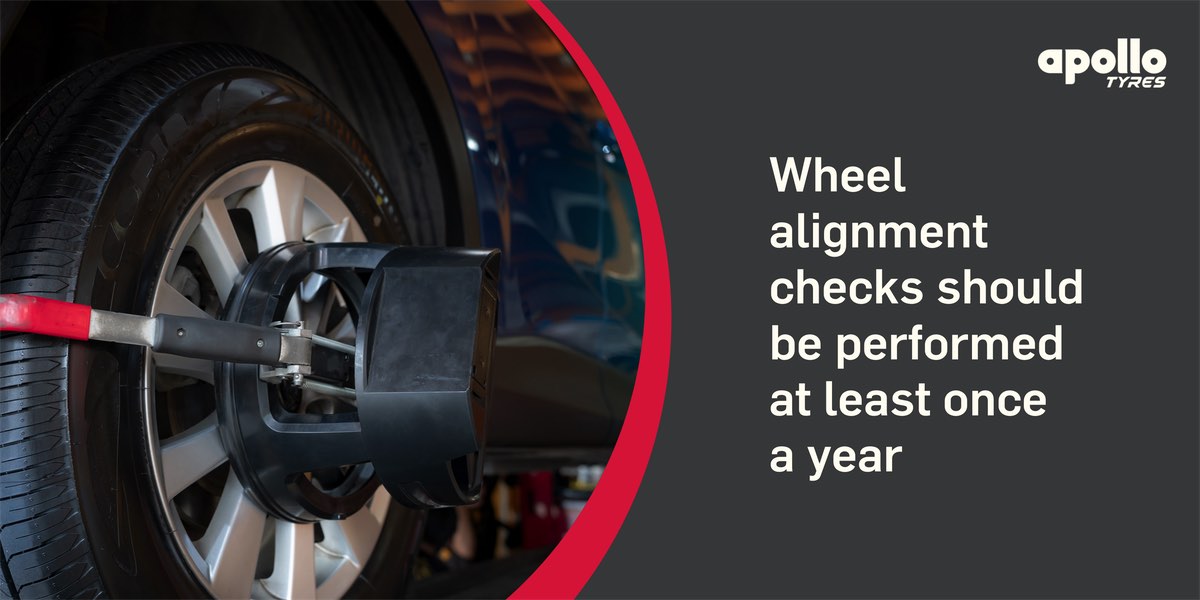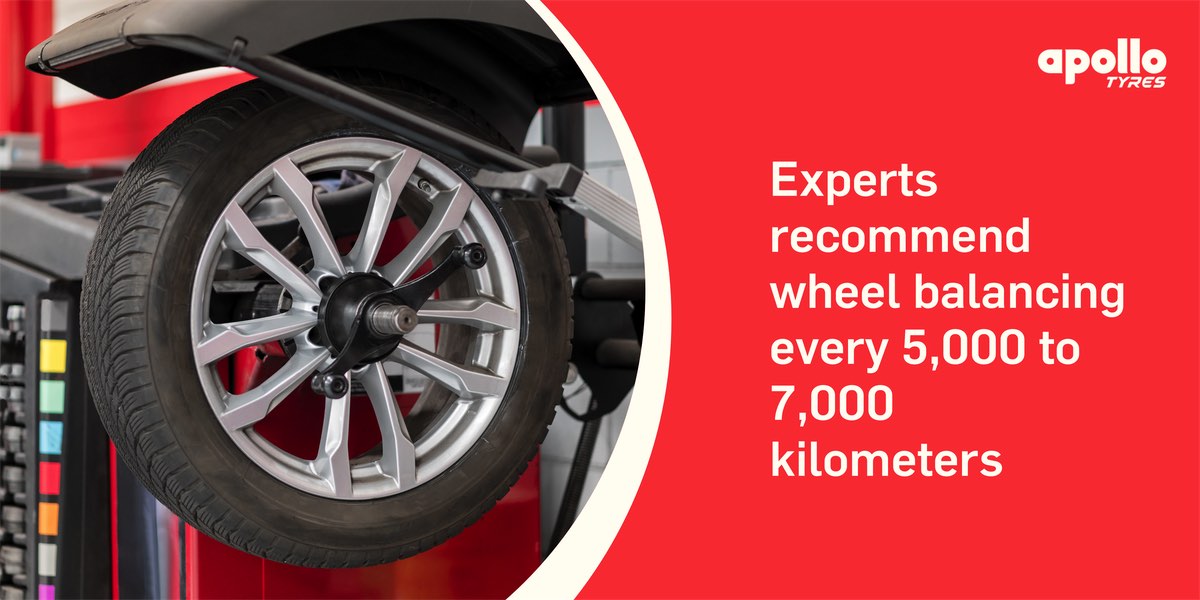You have no items in your shopping cart.
Wheel Alignment and Balancing, They are Not the Same
Know the difference between wheel alignment and balancing and how often should you get it done.
Your vehicle is a complex system with inter-dependent parts. If one part gets damaged, it’s only a matter of time before the issue starts affecting other connected parts and causes a serious malfunction. Incorrect wheel alignment and balancing is one such issue that can cause serious problems for your car’s operation by damaging the suspension and affecting tyre health.
What is wheel alignment?
Wheel alignment refers to the adjustment of your car’s suspension – the system connecting the wheels to the vehicle. It includes adjusting the angles at which the wheels and tyres are positioned to make contact with the road. A wheel alignment mechanic checks the following things when adjusting the wheels:
- Camber – The inward and outward angle of the tyre when viewed from the front. Negative or positive camber, that is the inward or outward tilt of the tyre, indicated improper wheel alignment and needs to fixed. Worn bearings, ball joints, and other suspension parts are majorly responsible for camber misalignment.
- Toe – The toe alignment is the inward or outward turning of your car’s wheels when viewed from above. To understand this, you can simply do a manual experiment with your own feet. Look at them from above and see if your toes angle inward or outward. If inwards, it’s a toe-in alignment and vice versa for toe-out alignment.
- Caster – Steering axis that tilts towards the driver is called positive caster whereas a tilt towards the front of the vehicle means negative caster. Caster angles help balance the vehicle’s steering, stability and cornering.
What causes improper wheel alignment?
Sudden impacts while driving at speed is among the most common causes of improper wheel alignment. Since Indian road conditions are far from perfect and we frequently come across potholes and bumps at speed, improper wheel alignment is not alien concept for Indian drivers. Similarly, small collisions which do not cause visible damage, such as hitting the curb or an object on the road, can also cause improper wheel alignment.
Symptoms of incorrect wheel alignment
The fact that improper wheel alignment is caused by non-visible damage to the car’s suspension setup causes most drivers to ignore the issue completely. But misaligned wheels can cause strain on your vehicle’s capabilities and lead to further damage to the suspension and tyres. Here are the most common signs of improper wheel alignment:
- Car pulling to one side: If your vehicle pulls to either side when driven on a flat surface, the wheels are in improper alignment.
- A vibrating steering wheel: Another sign of improper wheel alignment is slight to major vibrations in the steering wheel, especially at higher speeds.
- Uneven tyre wear: Lastly, if your car tyres are wearing down improperly, that is a clear sign of improper alignment. A caster misalignment can cause off-center wear of tyres (inwards or outwards) and is easily detectable through visual inspection.
Wheel alignment after how many kilometers?
It is advisable to have your wheel alignment checked at least once a year, even if you don't notice any issues. Regular alignment checks can help catch any potential alignment problems early and prevent excessive tire wear. Additionally, you should consider getting a wheel alignment if you experience any of the following:
- After hitting a pothole, curb, or other road hazards that may affect the alignment.
- If you notice uneven tire wear or the vehicle pulling to one side.
- If you've had suspension or steering repairs done on your vehicle.
However, keep in mind that these are general recommendations, and the ideal schedule may vary depending on your specific driving conditions and vehicle type.

What is wheel balancing?
Wheel balancing is often clubbed with wheel alignment, but they are not the same. Wheel balancing is required to ensure smooth driving, stability, and safety of your car tyres. Tyre balancing refers to compensation for weight imbalances in the wheel and tyre combo. Since wheel balancing is performed in conjunction with wheel alignment, most people think of them as the same thing.
Wheel balancing should always be performed off the car with modern wheel balancer machines that can calculate both dynamic
and static balance simultaneously. Have all four wheels balanced to sort out an out-of-balance condition.
Wheel balancing after how many kilometers?
It is a good idea to have your wheels balanced whenever you install new tires or if you notice any vibrations or wobbling while driving. If your vehicle is equipped with alloy wheels, it's recommended to get them balanced every 5,000 to 7,000 kilometers (3,000 to 4,000 miles) or during regular tire rotations. Apollo Tyres offers wheel balancing and alignment checks at authorised tyre shops near you when you purchase new car tyres from shop.apollotyres.com.

Benefits of Regular Wheel Alignment and Balancing
Regular wheel alignment and balancing are essential maintenance practices that offer numerous benefits for your vehicle and driving experience. Here are some key advantages of keeping your wheels properly aligned and balanced:
- Improved Tire Life: Proper wheel alignment ensures that your tires wear evenly. When your wheels are not aligned correctly, certain parts of the tires may experience excessive wear, leading to premature tire replacement. Regular alignment helps extend the life of your tires and maximizes your investment.
- Enhanced Fuel Efficiency: When your wheels are misaligned, your vehicle experiences increased rolling resistance, causing it to work harder and consume more fuel. Proper alignment reduces this resistance, leading to improved fuel efficiency and cost savings over time.
- Smoother and Safer Ride: Properly aligned and balanced wheels provide a smoother and more comfortable driving experience. You'll notice reduced vibrations and less pulling to one side, ensuring better handling and control of your vehicle. This contributes to overall driving safety, especially during challenging road conditions.
- Improved Handling and Stability: Wheel balancing ensures that each tire has an equal distribution of weight, preventing vibration and wobbling at higher speeds. This results in better stability and handling, allowing you to have more control over your vehicle during cornering and braking.
- Reduced Mechanical Stress: Misaligned wheels can put unnecessary stress on various vehicle components, such as suspension and steering parts. Regular alignment reduces this stress, leading to fewer repair costs and longer-lasting components.
- Prevention of Uneven Tire Wear: Wheel balancing helps distribute weight evenly among all tires, preventing uneven wear patterns. This avoids the need for premature tire replacement due to uneven wear on individual tires.
- Minimized Vibrations and Noise: Balancing your wheels eliminates the annoying vibrations and noise that can occur when your tires are not balanced correctly. This results in a smoother and quieter ride, contributing to overall driving comfort.
- Cost-Effective Maintenance: Investing in regular wheel alignment and balancing may seem like an added expense, but it can save you money in the long run. The benefits of improved tire life, better fuel efficiency, and reduced repair costs outweigh the initial investment.
Cost of Wheel Balancing and Alignment in India
Regular Generally, the cost of wheel balancing and alignment can range from around Rs. 500 to Rs. 1500 per wheel.
Here's a rough estimate of the cost for wheel balancing and alignment services in India:
Wheel Balancing Cost: The cost for wheel balancing typically ranges from Rs. 150 to Rs. 300 per wheel. Some service providers may offer discounts if you balance all four wheels at once.
Wheel Alignment Cost: Wheel alignment costs can vary based on the type of alignment (2-wheel alignment or 4-wheel alignment) and the complexity of the process. Generally, 2-wheel alignment can cost around Rs. 500 to Rs. 800, while 4-wheel alignment can range from Rs. 1000 to Rs. 1500.
Frequently asked questions:
What is the difference between wheel balancing and wheel alignment?
Wheel balancing involves distributing the weight of the tire and wheel assembly evenly to prevent vibrations and wobbling at higher speeds. Wheel alignment, on the other hand, ensures that the angles of the wheels are adjusted correctly so that they are parallel to each other and perpendicular to the road. Proper alignment helps maintain stable vehicle handling and even tire wear.
What are the signs that my wheels need balancing?
Common signs include steering wheel vibrations, excessive tire wear, and wobbling at higher speeds. Vibrations in the steering wheel or through the vehicle's floor can indicate the need for balancing.
Can wheel balancing fix steering wheel vibrations?
Yes, wheel balancing can often resolve steering wheel vibrations caused by imbalanced tires. Balancing redistributes weight to ensure smoother rotation.
How long does wheel balancing and alignment take?
Wheel balancing usually takes around 30 minutes to an hour, while wheel alignment may take an hour or more, depending on the type of alignment needed and the equipment used.
Can improper wheel alignment affect fuel efficiency?
Yes, improper wheel alignment can cause increased rolling resistance, leading to reduced fuel efficiency and higher fuel consumption.
Is wheel alignment covered under warranty when buying new tires?
Wheel alignment is typically not covered under tire warranties. However, Apollo Tyres online shop or dealerships may offer alignment services at a discounted rate when you purchase new tires from our online shop.
Can I drive my car if the wheels are out of alignment?
While it may be possible to drive with slightly misaligned wheels, it is not recommended as it can lead to uneven tire wear, reduced handling, and potential safety issues. Getting the alignment checked and adjusted is crucial for optimal vehicle performance and safety.
How do I know if my vehicle needs a 2-wheel or 4-wheel alignment?
The type of alignment your vehicle needs depends on the drivetrain and suspension configuration. A front-wheel-drive vehicle typically requires a 2-wheel alignment, while a 4-wheel-drive or all-wheel-drive vehicle may need a 4-wheel alignment.
Buy Car Tyres Online
visit shop.apollotyres.com
